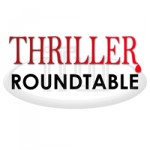

May 14 – 20: “Short story versus novel length, how do you adapt from one to the other?”
 This week we discuss short story versus novel length: “How do you adapt from one to the other?”
This week we discuss short story versus novel length: “How do you adapt from one to the other?”
Join ITW Members Lissa Price, D. P. Lyle, Alexandra Sokoloff, Dianna Love and Patricia Rosemoor. You won’t want to miss it!
~~~~~
 Lissa Price’s international best-selling debut YA, STARTERS, a futuristic thriller, is Random House Children’s Books lead title. Dean Koontz called it “a smart, swift, inventive, altogether gripping story.” The LA Times said it is “Dystopian sci-fi at its best,” and “Readers who have been waiting for a worthy successor to ‘The Hunger Games’ will find it here.” She has lived in Japan, Belgium and India, but now resides in the Southern California foothills.
Lissa Price’s international best-selling debut YA, STARTERS, a futuristic thriller, is Random House Children’s Books lead title. Dean Koontz called it “a smart, swift, inventive, altogether gripping story.” The LA Times said it is “Dystopian sci-fi at its best,” and “Readers who have been waiting for a worthy successor to ‘The Hunger Games’ will find it here.” She has lived in Japan, Belgium and India, but now resides in the Southern California foothills.
 D. P. Lyle is the Macavity winning and Edgar nominated author of both fiction and non-fiction. He has worked with many novelists and with the writers of the TV shows Law & Order, CSI: Miami, Diagnosis Murder, Monk, Judging Amy, Cold Case, House, Medium, Women’s Murder Club, The Glades, and Pretty Little Liars.
D. P. Lyle is the Macavity winning and Edgar nominated author of both fiction and non-fiction. He has worked with many novelists and with the writers of the TV shows Law & Order, CSI: Miami, Diagnosis Murder, Monk, Judging Amy, Cold Case, House, Medium, Women’s Murder Club, The Glades, and Pretty Little Liars.
To learn more about D. P. Lyle and his latest nonfiction book, MORE FORENSICS IN FICTION, click here.
 With 90 novels and 7 million books in print, Patricia Rosemoor writes “dangerous love” – combining romance with danger in romantic and paranormal romantic thrillers, even in romantic horror. Patricia won a Golden Heart from Romance Writers of America and two Reviewers Choice and two Career Achievement Awards from RT BOOK reviews. She’s the author of The McKenna Legacy, a fan favorite paranormal romantic suspense series. SKIN is her first indie thriller.
With 90 novels and 7 million books in print, Patricia Rosemoor writes “dangerous love” – combining romance with danger in romantic and paranormal romantic thrillers, even in romantic horror. Patricia won a Golden Heart from Romance Writers of America and two Reviewers Choice and two Career Achievement Awards from RT BOOK reviews. She’s the author of The McKenna Legacy, a fan favorite paranormal romantic suspense series. SKIN is her first indie thriller.
 NYT bestseller Dianna Love spent her early years creating unusual marketing projects for Fortune 500 companies. Now she writes thrillers and urban fantasy, which includes collaborating with #1 NYT bestseller Sherrilyn Kenyon. Their Belador UF series debuted on the NYT, USA Today, PW and Walmart bestseller lists. THE CURSE (Book three) is available September 18, 2012. Dianna speaks at reader events and has taught the popular Break Into Fiction® program nationally and internationally.
NYT bestseller Dianna Love spent her early years creating unusual marketing projects for Fortune 500 companies. Now she writes thrillers and urban fantasy, which includes collaborating with #1 NYT bestseller Sherrilyn Kenyon. Their Belador UF series debuted on the NYT, USA Today, PW and Walmart bestseller lists. THE CURSE (Book three) is available September 18, 2012. Dianna speaks at reader events and has taught the popular Break Into Fiction® program nationally and internationally.
 Thriller award winner Alexandra Sokoloff’s supernatural thrillers have also been nominated for Anthony, Bram Stoker and Black Quill awards. She is a produced screenwriter and teaches a Screenwriting Tricks for Authors workshop, based on her internationally acclaimed workbook and blog. Alex is the author of THE HARROWING, THE PRICE, THE UNSEEN, BOOK OF SHADOWS, and THE SPACE BETWEEN, and co-author of the paranormal KEEPERS series with Heather Graham and Harley Jane Kozak.
Thriller award winner Alexandra Sokoloff’s supernatural thrillers have also been nominated for Anthony, Bram Stoker and Black Quill awards. She is a produced screenwriter and teaches a Screenwriting Tricks for Authors workshop, based on her internationally acclaimed workbook and blog. Alex is the author of THE HARROWING, THE PRICE, THE UNSEEN, BOOK OF SHADOWS, and THE SPACE BETWEEN, and co-author of the paranormal KEEPERS series with Heather Graham and Harley Jane Kozak.
- LAST GIRL MISSING with K.L. Murphy - July 25, 2024
- CHILD OF DUST with Yigal Zur - July 25, 2024
- THE RAVENWOOD CONSPIRACY with Michael Siverling - July 19, 2024
